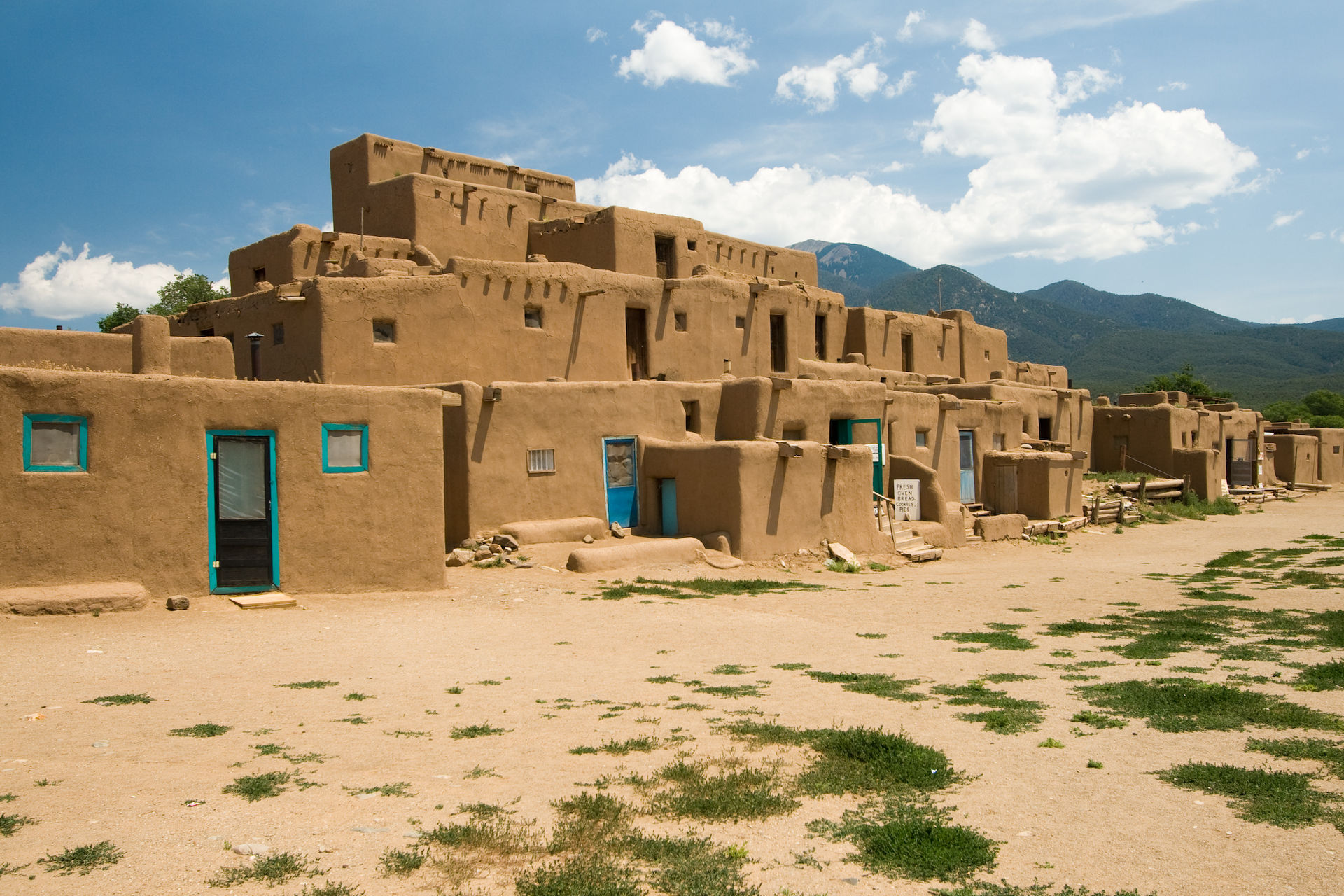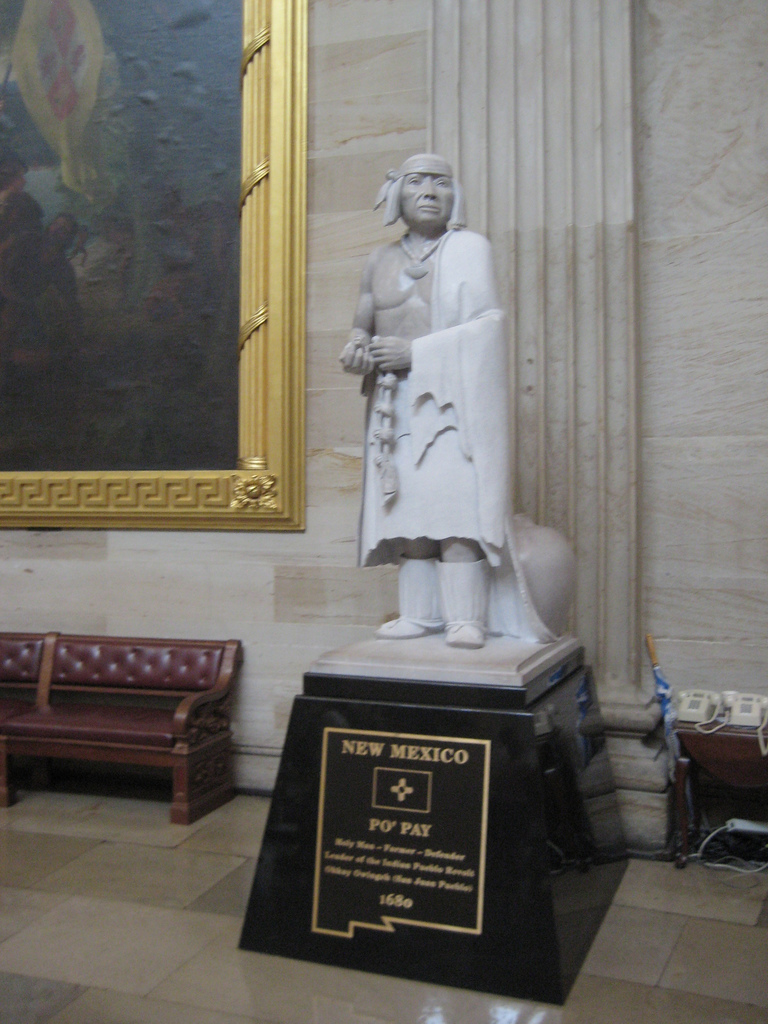In the late 17th century, Native American groups living under Spanish rule in what is now New Mexico rebelled against colonial authorities and pushed them out of their territory. In many ways, however, the events that led up to the revolt reveal a more complex relationship between Spanish and Native American than traditional histories tell. Stories of cruelty and domination are interspersed with adaptation and mutual respect, until a prolonged famine changed the balance of power.
Guest Michelle Daneri helps us understand contemporary thinking about the ways that Spanish and Native Americans exchanged ideas, knowledge, and adapted to each others’ presence in the Southwest.
Guests
 Michelle DaneriNative and Indigenous Studies Scholar
Michelle DaneriNative and Indigenous Studies Scholar
Hosts
 Joan NeubergerProfessor of History, University of Texas at Austin
Joan NeubergerProfessor of History, University of Texas at Austin
So, Michelle, if you could just start by giving us a sense of the main outline of colonial relations in New Mexico.
Absolutely. So, in 1598 the Spanish moved north into New Mexico from the rest of Mexico. Here they were very isolated and remote from the rest of the empire and therefore had to adapt to the cultural expectations of the Pueblo people in order to successfully remain in the area.
And who were the Pueblo people?
They were diverse peoples who lived in the New Mexico region, the Rio Grande Valley, and they were named Pueblos by the Spanish because they all lived in similar adobe style housing. And even though they wouldn’t have necessarily seen themselves as the same people at this time, the Spanish grouped them and called them Pueblos.
Are you saying there was more interaction and exchange between colonial authorities and the peoples living there? Were these dynamics unique to this region, or were they reflected elsewhere?
Yes. I think that sometimes when we think about colonial relations it’s tempting to think of them as inevitable, as in: European powers came in and dominated the people. However, this is not the case in colonial New Mexico. And New Mexico’s not the only place that this happens. Another example of a place where indigenous people asserted more power and interaction with European powers was in the Arkansas Valley. One group, the Quapaws, is an example of this. They actually had to interact with differing powers coming through all the time, whether that be French, Spanish, British, American or other indigenous people. What they saw was that whatever power was coming through at the time, they had to really adapt to the Quapaws’ understanding of reciprocity—and what I mean by that, and this will come up again in New Mexico, is the idea that if someone gives you something, you must give that back or else you’re indebted to them. So if the Quapaws are being hospitable or helpful to, say, the French, it is important that the French reciprocate something and give them something like new technology or a monetary gift or something of that nature. In that way, they were really able to assert power because even though this wasn’t a European cultural practice, Europeans understood and knew that they had to engage in this in order to survive in the area. You see this in New Mexico as well.
So how did this work in New Mexico?
In New Mexico it’s important to think about what situations the Spanish were entering. In 1598, they enter New Mexico and they are vastly outnumbered. There are about 80,000 Pueblo people in New Mexico at the time and only 560 settlers and ten Franciscan friars. What they had to do was truly respect the Pueblo people and offer something useful to them. They did that in bringing new crops; the pueblos had used corn as their staple crop, but the Spanish brought in wheat. The Spanish brought in new livestock such as sheep for wool and meat, or donkeys that were used for transportation. They brought in axes and hoes to use for agriculture and they brought in new technology to use for building adobe homes. So even though the Spanish were outnumbered, they did bring a lot of useful technology for the Pueblo people.

And how did the Pueblo people react? Did they embrace the new technology? Did they resist Spanish colonial power?
They openly adapted to these new technologies because they did make their lives easier. One area that we can think about that shows how gift giving was a little more complicated is the gift of religion and religious knowledge. Now, when the friars brought in Christianity to the Pueblos, the Pueblos ended up taking what was useful or adaptable for them and really believed that Christianity really held some religious knowledge or power and used that and incorporated it into their existing beliefs. Missionaries were aware of this and used it as a strategy for conversion. When things were going well in New Mexico, the Pueblos were happy with Christianity, but once there were droughts or famines or things of that nature, the Pueblo people started questioning that religion. So it was kind of a real mixed bag for them. Christianity could be positive, but it could be negative too.
And in what ways were the Spanish people reliant on the Pueblo people?
In a lot of interesting ways actually. One way was that they were completely reliant on the Pueblo people for tributes of corn. This made problems later. The Spanish people didn’t account for years where there was less rainfall. Also, the Spanish settlers depended on the Pueblos for medical care. This was another thing that was really important. In these Spanish communities, if you were sick the person you would go to for medical care would have been the Franciscan friars solely on the basis that they were the most educated people in the community. However, these friars were practicing things like bloodletting that just weren’t useful or helpful to the Spanish. So what they ended up doing in doing in most accounts was going to native healers and using healing plants that the Pueblos would have used themselves. And that was really the preferred choice of medical care. So on the ground, the Spanish are relying on the Pueblos for their livelihood.
Those are some examples of cultural knowledge that the Pueblos shared with the Spanish. Were there others?
One other example of cultural knowledge that the Pueblos gave to the Spanish was how to build homes that accommodate the New Mexico environment. Pueblo people are familiar with the climate and the region, so they had to show the Spanish how to correctly build houses. Interestingly enough, in traditional Pueblo culture, women were actually the house builders, and that really diverged from Spanish society, where that would have been seen as more masculine labor. So it was the house building techniques of women that really came together with some of the Spanish people’s own technologies in building adobes to build better homes. So that’s actually an example of the coming together of both of these cultures.

There are lots of examples of reciprocity and exchange between the Spanish colonizers and the Pueblo peoples. There must have been conflicts too. How did this useful exchange breakdown into conflict?
Conflict between the Pueblos and the Spanish started very early on. When the Spanish entered New Mexico under the leadership of governor Juan de Oñate, they were actually dealt with a great deal of violence. Thirteen Spanish soldiers were killed. As punishment for what had happened at the Acoma Pueblo, the Spanish actually really brutally punished the Pueblos. They took every man in the Acoma Pueblo and cut off their foot. This is something that really stuck in the mind of the Pueblo people; recently, when a statue was put up to commemorate Oñate and New Mexico’s Spanish heritage, as an act of resistance, the statue was vandalized, having one of its foot cut off to kind of show and question whether we should be honoring someone who mutilated a lot of Pueblo people.
So the initial conquest was accompanied with a lot of violence. Did the conflicts continue throughout the 16th and 17th century?
Throughout the 17th century, as I had noted, there was a lot of cultural exchange that kind of created a lot more harmony in the community. However, things started to deteriorate around the 1660’s. One of the ways conflict deteriorated was actually conflict between the Spanish and the Franciscans themselves. The Spanish and the Franciscans kind of offered two realms of leadership for the Pueblo people, military and religious leadership, so they were authorities that the Pueblos did look up to because they assumed these leadership positions that the Pueblos already had. Therefore, once they started conflicting with each other, it really made the Pueblos start to question Spanish authority and whether or not they were wise leaders if they themselves were bickering.
Also at this time, you see a lot of other outside influences that lead to a deterioration of society. One is famine brought on by droughts in the 1660’s. Because famine had substantially weakened the population, it led for disease to spread easily. In 1671 there are a huge amount of epidemics spreading throughout these communities. Both of these things lead to a population decrease. And this coupled with the Spanish practice of consolidating the Pueblos, which means that they would take these numerous communities and reorganize them. It was a very tumultuous time with a lot of change. So all of these things were happening, and also as another outside pressure, Apache and Navajos, which were outside native groups in the area, increased their raids of Pueblos in the 1670’s, and this caused some Pueblo people to abandon their communities. So at this time, you see a real deterioration of the social order. And this leads the Pueblo people to go back to their own native religion. At this time, the friars are getting a lot stricter and are trying to crack down on any revival of the Pueblo religion. But because the Pueblos see that the Spanish have brought on all these bad occurrences in their communities, they’re more apt to go back to their religion, and that creates a real conflict between friars who are trying to assert a lot of control over the communities and Pueblo religious leaders who are trying to revive balance in their communities by bringing back their previous religious beliefs.
And what provoked the Pueblo revolt of 1680?
All of these conditions boil over and lead people to be incredibly unhappy with Spanish leadership. At this time, a Pueblo named Popé emerges as a real leader in these communities. He is a religious leader who is able to excite and mobilize people. As I have mentioned before, the Pueblos didn’t necessarily see themselves as one people, but united over their joint desire to expel the Spanish. They were even able to unite with some Apaches and Navajos, who had previously been their adversaries, but agreed on their premise of wanting to rebel against the Spanish.
What was the Pueblo revolt of 1680? What happened?
So in 1680 the Pueblos secretly organized a revolt against the Spanish. They did this by sending two runners throughout the Pueblos, who took a rope with knots tied in it to signify how many days to the oncoming revolt. The Spanish actually captured these messengers and knew what was going to happen before it happened, but just couldn’t accept or even believe that the Pueblos would revolt against them. So in this secret way, messengers were able to communicate that a rebellion would happen. Of course, not every one of the Pueblo people agreed on this, but a great deal did. They ended up pushing the Spanish out of New Mexico. They had to leave and they had to stay in what is now El Paso. They stay there until 1692.
So the Spanish were pushed completely out of this region, back to what today is Texas? Is that right?
Yes.
How does all of this prompt us to rethink colonial relations in colonial America?
I believe this episode shows us that the Spanish had to adapt to Pueblo expectations by bringing in cultural knowledge and beneficial technologies. While this was going well for the Pueblos at a certain time, once it started to be negatively affecting their communities, the Spanish were no longer deemed a positive presence in these communities and were expelled. So I think it really shows how the Pueblos really had the power in this area, and it wasn’t a matter of the Spanish coming in and dominating; they were only able to stay and remain in the area as long as they were useful and respecting of Pueblo cultural expectations.
What accounts for Pueblo power in this region? Why were they able to expel the Spanish?
Well if you think about it, the Spanish are very far and remote from the empire. To even contact Mexico City could take a year, and that would be the best scenario. They would send caravans yearly, just once a year, up to New Mexico, and sometimes they wouldn’t even reach it. So they’re really on their own there and they’re vastly outnumbered by the Pueblo people in a region that they don’t know. It’s very easy to see they are vulnerable here.